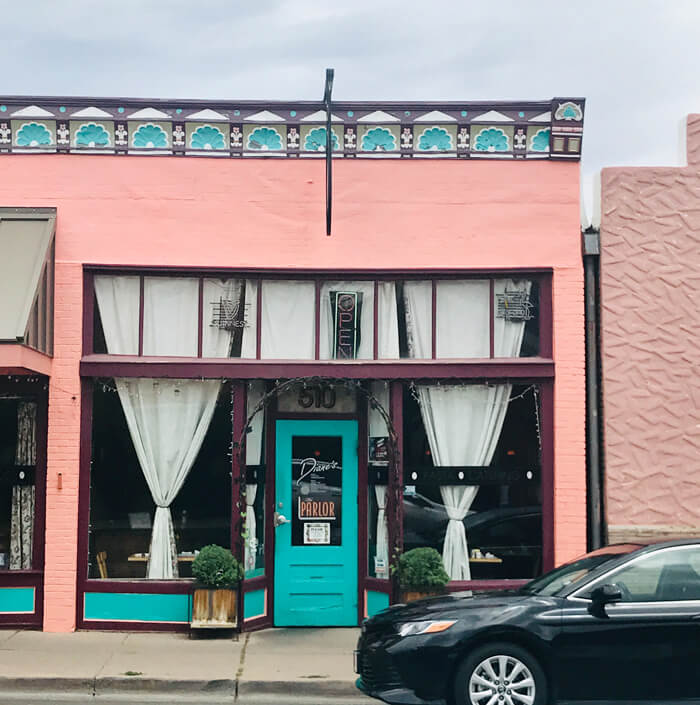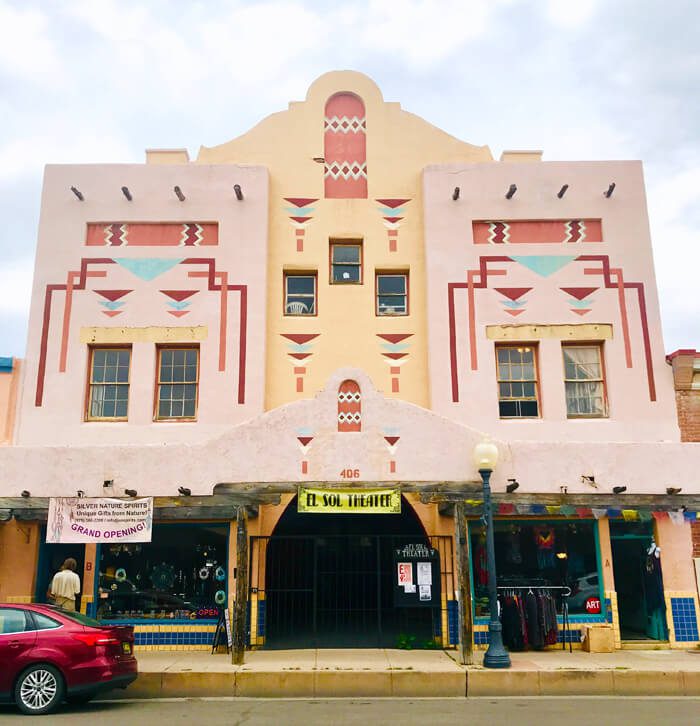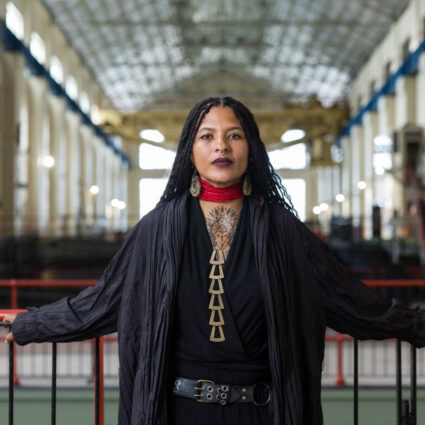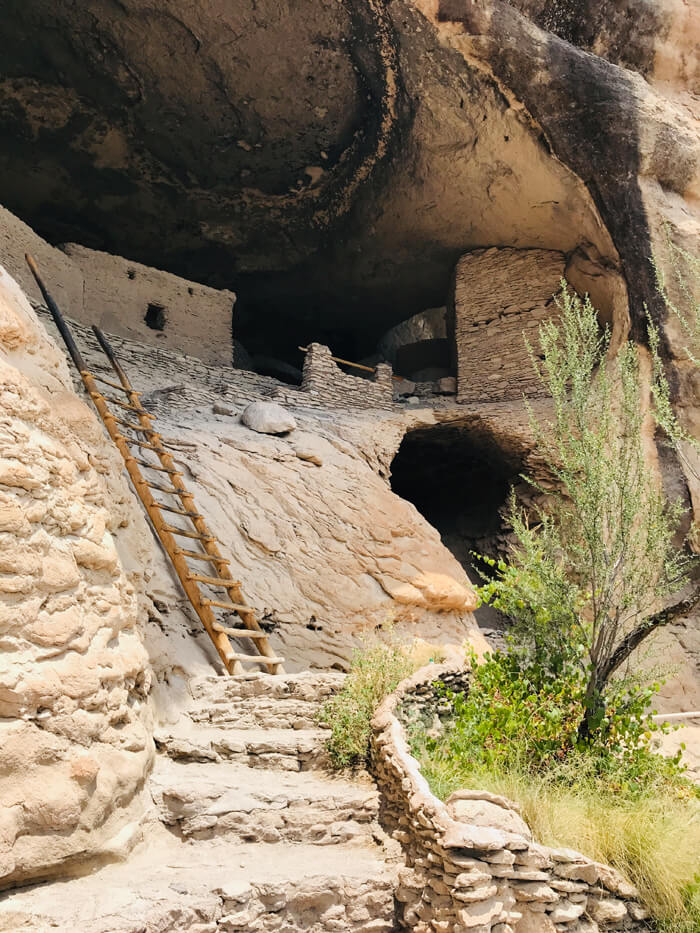
Distance: 326 miles
Elevation: 5,985 feet
Population: 9,647
Founded:
ca. 1000 Mimbres Mogollon people
ca. 1500 Chiricahua Apache people
ca. 1799 Spanish came for copper mining after
Apaches showed them Santa Rita, site of
the Chino Copper Mine
1870 Silver City was established by American
mining prospectors
It should be on everyone’s bucket list. Silver City. It sounds like a romantic vestige of another time. I didn’t realize how much so until I turned off the highway and onto a deliciously winding drive through the Black Range and into the Gila National Forest and Pinos Altos Mountains.
I hadn’t realized how overwhelmed I had been until I started driving, but some three hours into the five-hour drive, I started coming back to myself, realizing just how staggeringly beautiful the southern leg of the Geronimo Trail National Scenic Byway is. I pulled over, got out of my RAV4, and breathed in the exquisite silence. This place, at the intersection of several ecosystems, was magical. At one point, I found myself in a nearly mythical landscape—a forest of blooming century plants. I couldn’t even speak. To be honest, the entire time my friends and I were exploring the area, I communicated in otherworldly sounds. The Gila loop is now gigglingly referred to as “the orgasm drive” among my squad.
Then there are parts like the gaping Chino Mine, working twenty-four hours a day to tear down mountains for copper and make new ones from the disposed ore, a literal and figurative scar on the landscape of this place. Yet also, this is an industry that guarantees decent work in a remote part of the state. My architect-trained self stands in awe of its engineering, while my earth-loving self stands in dismay.
Finally, the city itself: the first colonial occupancy here started out as a tent city for copper-, silver-, and gold-mining prospectors in the 1870s. The tempestuous town that evolved (frequented by Billy the Kid and Butch Cassidy and the Wild Bunch) was inserted into the landscape without regard for the powerful geography and weather of the area, attempting to defy nature by orienting itself on a nice, clean north-south axis rather than melding with the topography. The mountains above the town were logged for building materials and then allowed to be overgrazed, resulting in imbalance. With no preparation for drainage, the town awoke to a flash flood on the night of July 21, 1895, and a fifty-five-foot deep gash in the earth where Main Street once was. Buildings that survived now use their backdoors on Bullard Street as their front entrances, which shifted the primary artery of the town. Several more floods over the years brought more destruction, and the city has responded, building better and smarter. Part of Silver City’s distinctive “style” has resulted from the very high curbs used to manage these assaults. Because of them, the city is not fully accessible to everyone—the stairs at the end of many blocks’ sidewalks are a challenge for those of us with visual and physical limitations. Yet these characteristics also add to the character of the place.
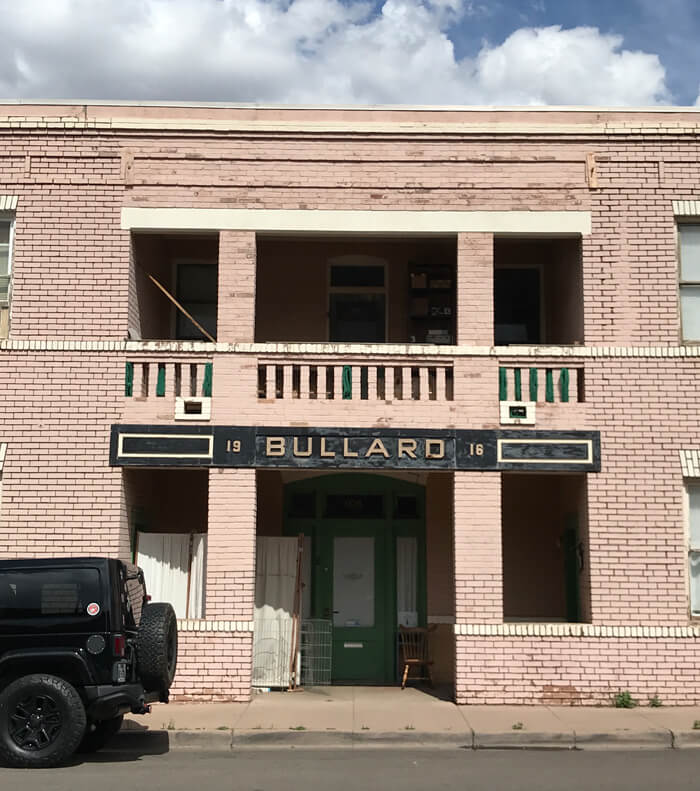
History, on Foot
The Italianate Bullard House and Beyond: Silver City’s economy has remained tied to mining’s booms and busts since the beginning, and it shows. Historic façades are ubiquitous in the town’s all-American architectural style, and the mix of Second Empire, Victorian, Gothic, and Art Deco buildings is quite lovely (see the gorgeous Italianate Bullard House). However, because the population isn’t growing—and hasn’t really since the railroad era ended in the middle of last century—much of the late nineteenth- and early twentieth-century brick architecture in the eighty-eight-acre historic district is in need of refurbishment. Without a strong preservation strategy and large sums of money to implement it, the town has been free to solve its unique architectural problems with a little baling wire, paint, and determination. This has resulted in a cool, funky place full of life and visual delights that is genuinely for the people and doesn’t take itself too seriously.
Without a strong preservation strategy and large sums of money to implement it, the town has been free to solve its unique architectural problems with a little baling wire, paint, and determination. This has resulted in a cool, funky place full of life and visual delights that is genuinely for the people and doesn’t take itself too seriously.
Around Town
The town, chill even on a holiday weekend, has supplemented its mining economy by focusing on becoming a great place for retirement and the arts—which seems appropriate, considering that some of the most creative arts in New Mexico originated around 1000 CE with the Mimbres Mogollon native inhabitants of the area. Their fanciful Mimbres figures are so #newmexicotrue that you can find them decorating buildings and other wares all over the state, including the ballroom and decorative wainscots in Santa Fe’s own La Fonda on the Plaza. While the historical Mimbres figures were black, white, and sometimes red, modern Silver City has embraced a rainbow of bright colors as one of its defining features. Dozens of murals, mosaics, and façades invite visitors to linger.
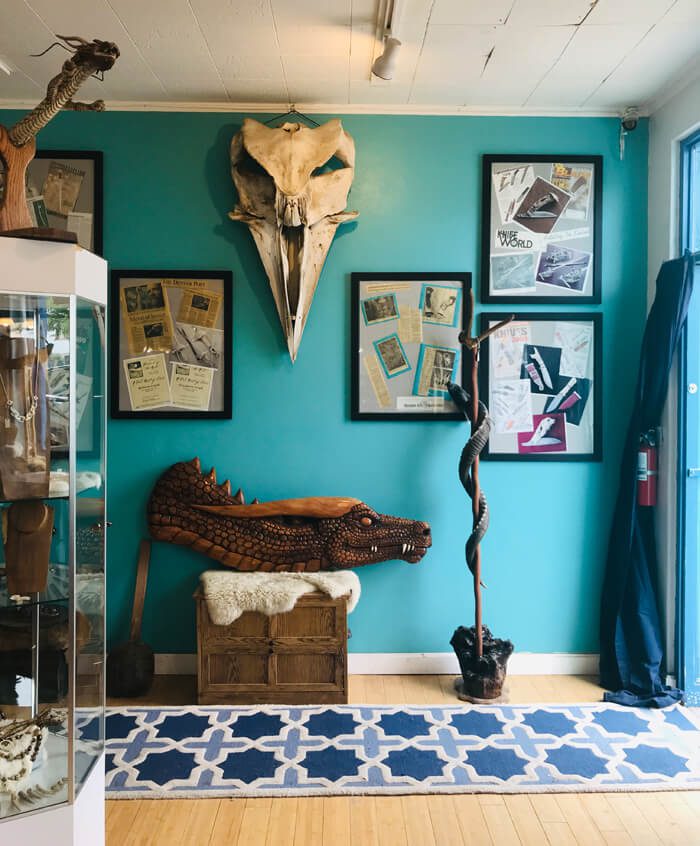
Follow the Red Dots
Strolling through Silver City and some of her vibrant side streets takes a couple hours. Allow extra time, and bring your camera if folk art, architecture, and galleries excite you. One easy way to find your way around Silver City’s art hubs is to look for the round, red “Art” decals that announce galleries as members of the Silver City Art Association, which represents more than one hundred local artists. Numerous festivals, celebrating everything from blues (Silver City Blues Festival, May) to clay arts (Silver City Clay Festival, July) and printmaking (Southwest Print Fiesta, October 11-13, 2019) offer would-be visitors an excuse to come play.
Art + Architecture
Lloyd Studios
306 W Broadway St, Silver City
On Broadway, the city’s secondary thoroughfare, is the fearlessly ultra-turquoise Lloyd Studios. Drawn in by their unique décor and some stunning architectural details in the tucked-away private home beyond, I loved the hand-folded Damascus steel knives and swords, custom jewelry, unexpected “alien” petroglyphs, carved dragons, and the freakish whale skull that decorate the space. Owners William and Elizabeth Lloyd have created a haven for the weird here, and for once, it’s not cheesy at all.
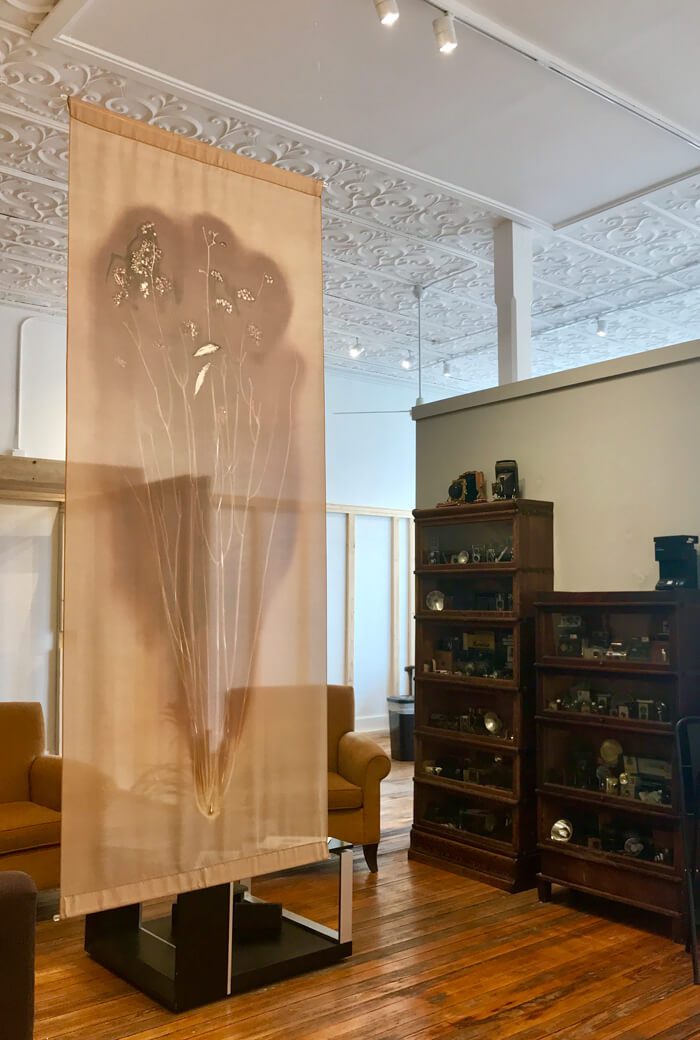
Light Art Space
209 W Broadway St, Silver City
Also on Broadway, the gallery Light Art Space was showing an amazing collection of cyanotypes, sun-processed images on silks, and other photographic works. Soaring tin ceilings and walls that end well below them allow natural light to permeate the space, making it feel open and inviting, resulting in a surprisingly modern feel that complements the artistic works perfectly.
The Murray Hotel
200 W Broadway St, Silver City
The Art Deco Murray Hotel, despite being renovated in 2013, begs to be loved up by a visionary who can free it from its meh paint job and uninspired furnishings. Its softly streamlined exterior is still an enticing draw for photographers.
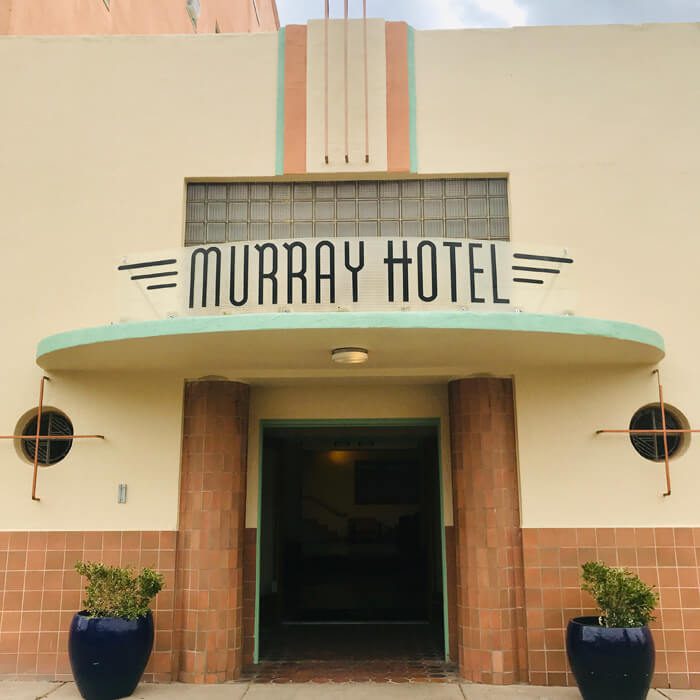
Eat
Revel
304 N Bullard St, Silver City
The historic district ebbs and flows with creative spaces, old and new. There are several really interesting food options, including Revel, which offers up adventurous versions of familiar fare, like a pork belly BLT, a chicken salad “sammich” that literally melts in your mouth, or a bratwurst served with caviar.
Several unique coffee houses offer the means to perk you up if you started too early or overdid the exploring.
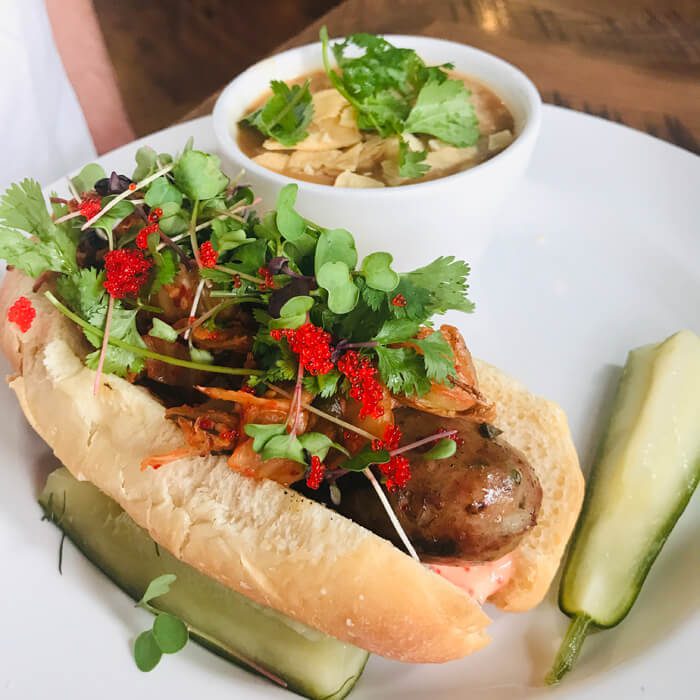
Space + Time
While my inner entrepreneur and artist finds the-little-town-that-could aspects of Silver City to be charming and full of potential, my adventure girl loves the everywhere that’s not town. This was a land so beautiful and sacred that Apache heroes, including Geronimo, defended it fiercely, some to their deaths. A trip here would be a soul-crushing disappointment were it not to include time for two day-trips to experience the true depths of this place. (Which, of course, we attempted to stuff into a single day. I advise against this. Use it as an excuse to go camping and really dig into your ideas of wilderness!)
Trail of the Mountain Spirits Scenic Byway
The first is the Gila Cliff Dwellings. For this adventure, I recommend the ninety-three-mile loop drive on the Trail of the Mountain Spirits Scenic Byway, with a stop at the charming “ghost town” Pinos Altos. If I had no need to work, I could easily spend the rest of my life exploring the three million acres of the Gila Wilderness. It’s literally not possible to even attempt to photograph all the stunning views and outcroppings here. It’s take-your-breath-away gorgeous. Hills give way to mountains, which open up to reveal lakes and canyons and vistas on both sides as you zoom along the saddles of mountains into an ancient wilderness dotted with ranches, hunting camps, the ruined heaps of pithouses, and even intact cave ruins from peoples that lived and worked on this land some 1,300 years ago. There are dozens of hikes and amazing camping spots in the area.
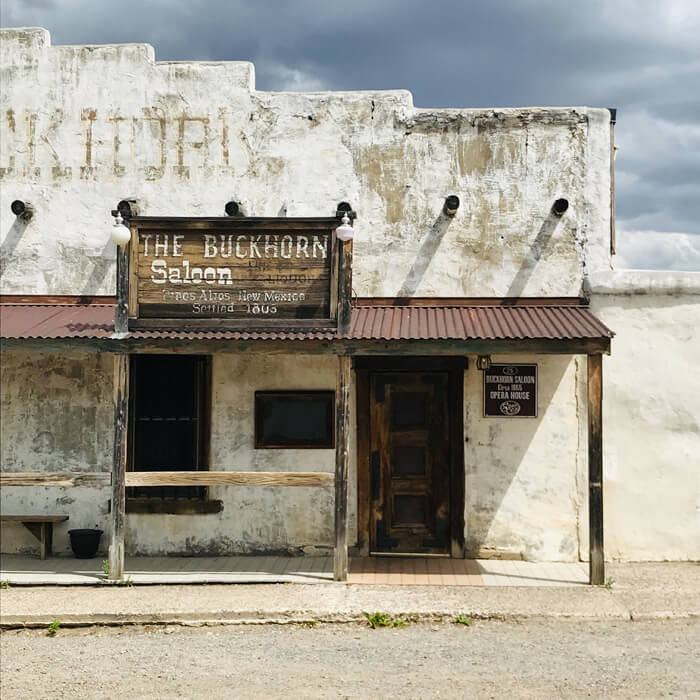
Gila Cliff Dwellings
President Teddy Roosevelt designated the well-preserved Gila Cliff dwellings as one of the country’s first national monuments in 1907. A one-mile loop climbs 175 feet to five caves on a southeast-facing cliff, which shelter hand-built stone rooms for the forty or so people who lived here in the late 1200s. The cave is enormous and cool, even in the heat of summer. A pile of petrified corn cobs rests in a corner of a room that has been unoccupied for six hundred years, and several little pictographs peek out at visitors exploring the expansive cave complex, parts of which are still inaccessible. It’s only upon descending the ladder back to the trail where one can truly grasp the level of engineering required for the Mimbres’ efforts. Make sure to stop at the bottom of the seventeen-mile spur drive from the cliff dwellings at Doc Campbell’s Post for what I promise will be the best-tasting ice cream you have had in a very, very long while.
City of Rocks State Park
My second essential day trip recommendation is to drive through San Lorenzo and then about forty minutes south on NM 61 to City of Rocks State Park. This otherworldly landscape of volcanic rock formed more than thirty-four million years ago in a flat desert landscape otherwise devoid of decoration. It seems almost as if it is the remnants of a lost city that was forgotten to time. Their visitor center, which has a long central spine connecting its two buildings, is architecturally interesting as well, and there are several beautifully landscaped vistas where you can grab a seat on a bench and take in the vastness of the desert. Nearby is funky and rustic Faywood Hot Springs, where you can enjoy private or public baths and clothing-optional pools for thirteen dollars an hour. For me, the perfect day consists of hitting the state park in plenty of time to explore for a couple hours and then finding the perfect place to watch the sunset, because those rocks are gorgeous against the setting sun.
